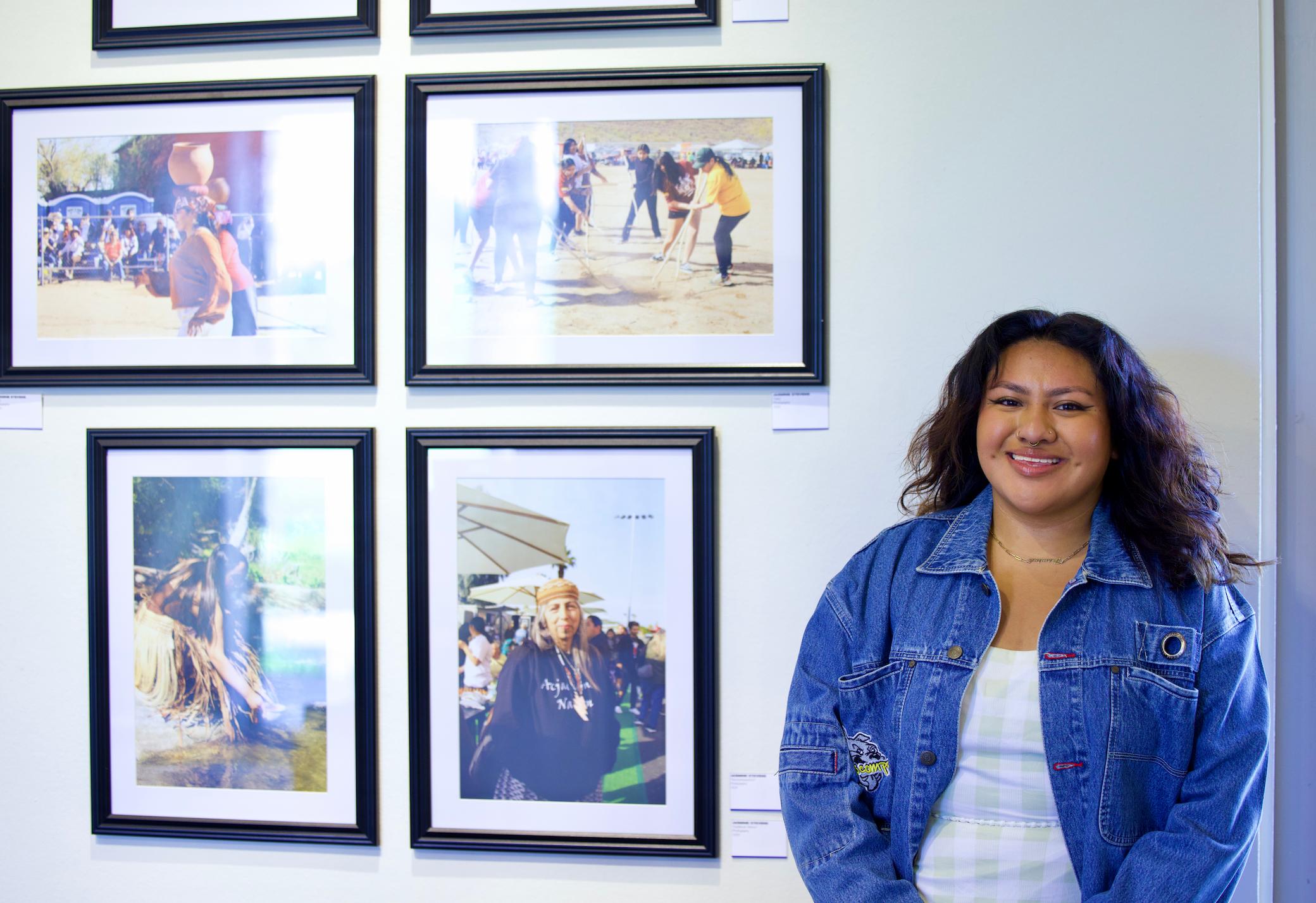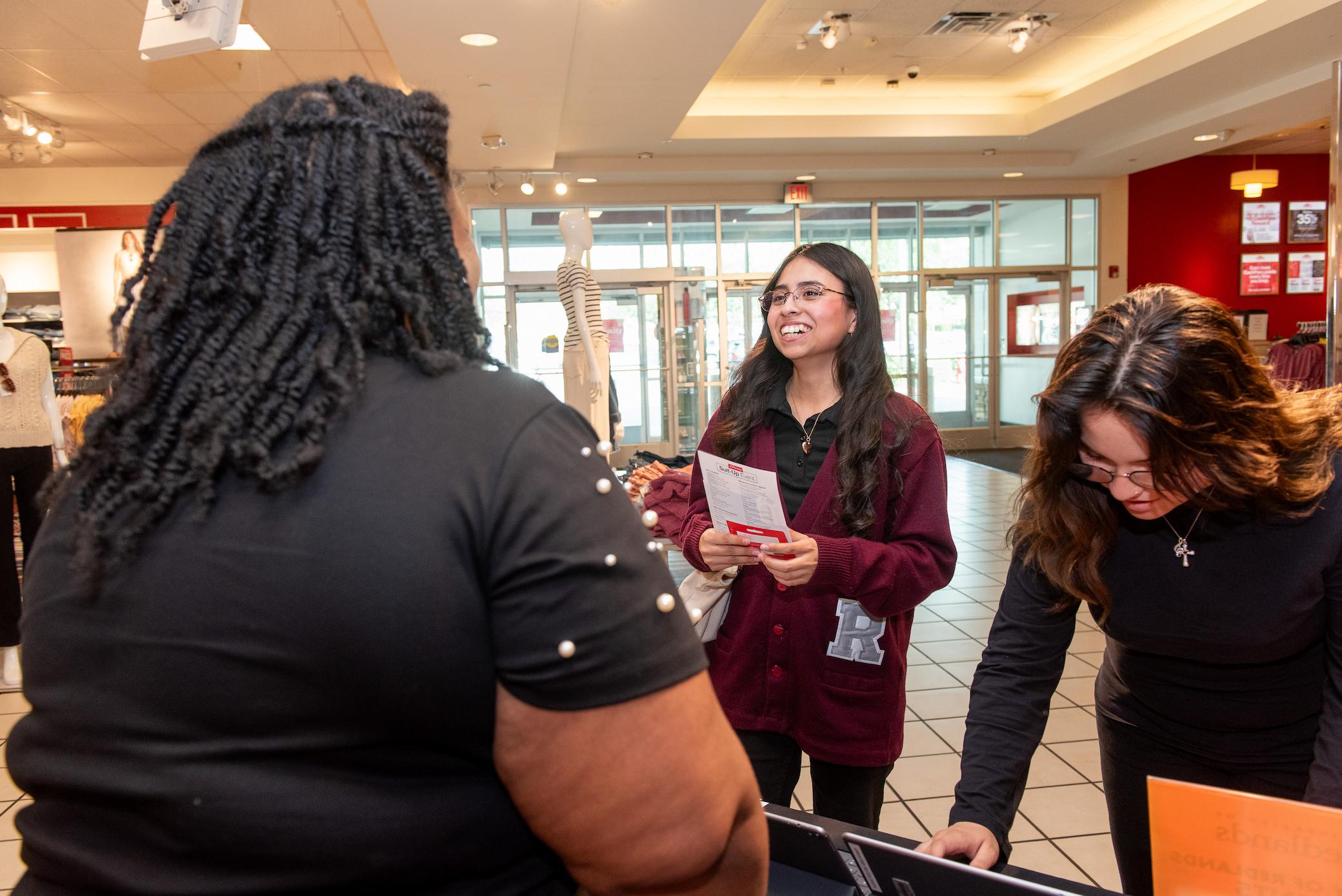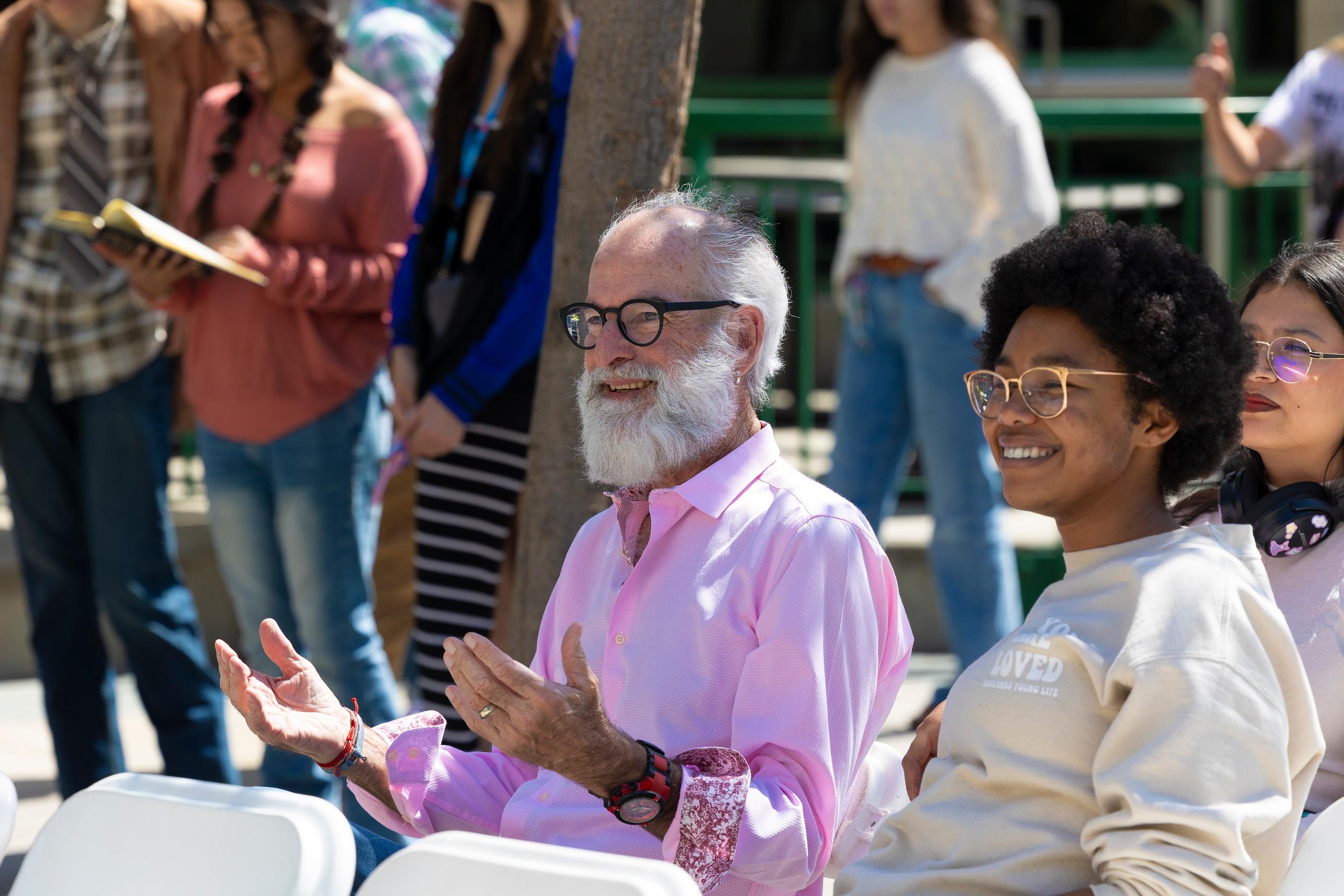Student Life
The language around LGBTQIA2S+ identity and topics continues to evolve as culture shifts, understandings of gender and sexuality evolve, and more terminology is constructed that more accurately describes the LBGTQIA2S+ experience.
The definitions provided below are not universal. Meaning the definitions provided give a thorough but not comprehensive understanding, as many of the ways these terms are defined are subjective. The definitions below are concrete points of grounding that speak to the key elements of the term, though they may vary from person to person.
This dictionary specifically defines terms as related to gender and sexual orientation. Though this dictionary only provides a snapshot of queer existence, it is a helpful source for defining LGBTQIA2S+ terminology.
A • B • C • D • E • F • G • H • I • J • K • L • M • N • O • P • Q • R • S • T • U • V • W • X • Y • Z
A
Allosexual
A sexual orientation generally characterized by feeling sexual attraction to others.
Ally
A person who supports and respects members of the LGBTQIA2S+ community. A person who is not a part of the LGBTQIA2S+ community can be an ally, and people of the LGBTQIA2S+ community can be allies to folks they do not share an identity with.
Allyship
The action of working to end oppression through coalitional efforts.
Androgyne
A person with a gender that is both masculine and feminine or in between masculine and feminine. Commonly considered a non-binary gender identity.
Androgyny/ous
Gender expression that has both masculine and feminine elements.
Androsexual/Androphilic
The attraction to men, males, and/or masculinity
Aromantic
A romantic orientation generally characterized by not feeling romantic attraction or a desire for romance. Aromantic people can be satisfied by friendship and other non-romantic relationships. Many aromantic people also identify with a sexual orientation, such as asexual, bisexual, etc.
Asexual
A broad spectrum of sexual orientations generally characterized by feeling varying degrees of sexual attraction. Asexuality is distinct from celibacy, which is the deliberate abstention from sexual activity, despite sexual desire. Some asexual people do have sex and do experience varying levels of sexual attraction. Asexuality is often referred to as both an umbrella term and a spectrum. A person who does not experience sexual attraction can experience other forms of attraction such as romantic attraction, physical attraction and emotional attraction. These may or may not correlate with each other - for instance, some people are physically and romantically attracted to women. However, others might be physically attracted to all genders and only emotionally attracted to men.
B
Bicurious
A curiosity about experiencing attraction to people of the same gender/sex.
Biological Sex
The chromosomal, hormonal, and anatomical characteristics that are used to medically classify an individual as female, male, or intersex. Often referred to as simply “sex,” “physical sex,” “anatomical sex,” or specifically as “sex assigned [or designated] at birth.”
Bigender
Having two genders, exhibiting cultural characteristics of masculinity and femininity.
Bisexual
A person whose primary sexual and affectional orientation is toward people of the same and other genders.
BlaQ/BlaQueer
Folks of Black/African descent and/or from the African diaspora who recognize their queerness/ LGBTQIA2S+ identity as a salient identity attached to their Blackness and vice versa. (T. Porter)
Butch
A gender expression that fits societal definitions of masculinity. Usually used by queer women and trans people, particularly by lesbians. Some consider “butch” to be its own gender identity.
C
Cisgender/Cis
A gender identity in which a person’s assigned sex at birth is in alignment with their gender. The prefix cis- means "on this side of" or "not across."
Cross Dresser (CD)
A word to describe a person who dresses as a gender other than their assigned sex; carries no implications of sexual orientation.
D
Demisexual
Demisexuality is a sexual orientation in which someone feels sexual attraction only to people with whom they have an emotional bond. Most demisexuals feel sexual attraction rarely compared to the general population, and some have little to no interest in sexual activity. Demisexuals are considered to be on the asexual spectrum.
E
Emotional/ Spiritual Attraction
An affinity for someone that evokes the desire to engage in emotionally intimate behavior (e.g., sharing, confiding, trusting, interdepending), and can be experienced to varying degrees.
F
Femme
Historically used in the lesbian community. This term is increasingly used by more LGBTQIA2S+ people to describe gender expressions that reclaim and disrupt social constructs of femininity, e.g. trans femme.
Feminine Presenting; Masculine Presenting
A way to describe someone who expresses gender in a more feminine or masculine way.
Feminine of Center
A word that indicates a range of terms of gender identity and gender presentation for folks who present, understand themselves, relate to others in a more feminine way. This term is constructed by and for queer people of color to describe gender in relationship with race.
FTM (Female-to-Male)
An abbreviation that describes the shift of gender/sex from female-to-male.
FTN (Female-to-Non-binary)
An abbreviation that describes the shift of gender from female-to-non-binary.
G
Gay
A sexual orientation toward people of the same gender.
Gender
A social construct used to describe a person as a man, woman, transgender, etc. This is different but can be related to the sex one is assigned at birth.
Gender Expansive
An umbrella term used for individuals who broaden their own culture’s commonly held definitions of gender, including expectations for its expression, identities, roles, and/or other perceived gender norms. Gender expansive individuals include those who identify as transgender, as well as anyone else whose gender in some way is seen to be broadening the surrounding society’s notion of gender.
Gender Expression
How one expresses oneself, in terms of dress and/or behaviors. Society, and people that make up society characterize these expressions as "masculine,” “feminine,” or “androgynous.” Individuals may embody their gender in a multitude of ways and have terms beyond these to name their gender expression(s).
Gender Fluid/Genderfluid
A person whose gender identification and presentation shifts, whether within or outside of societal, gender-based expectations. Flowing between two or more genders.
Gender Identity
A sense of oneself as trans, genderqueer, woman, man, etc., which may or may not correlate with the sex and gender one is assigned at birth.
GNC (Gender Non-Conforming)
Someone whose gender presentation does not conform to gender norms or gendered expectations.
Gender Normative
Someone whose gender presentation aligns with society’s gender-based expectations.
Gender Outlaw
A person who refuses to be defined by conventional definitions of male and female. (“Gender Outlaw” by Kate Bornstein)
Genderqueer
A person whose gender identity and/or gender expression falls outside of the dominant societal norms for their assigned sex, is beyond genders, or is some combination of them.
Gender Variant
A person who varies from the expected characteristics of the assigned gender and societal gendered expectations.
Gynesexual/Gynephilic
Pronounced “guy-nuh-seks-shu-uhl”/”guy-nuh-feel-lic”. Attracted to woman, females, and/or femininity.
H
Heterosexual/Heterosexuality
A sexual orientation in which a person feels physically and emotionally attracted to people of a gender other than their own in ways that reinforce binary understandings of sexual orientation.
Homosexual/Homosexuality
A term that describes a sexual orientation in which a person feels physically and emotionally attracted to people of the same gender.
I
Intersex
An umbrella term and an identity. Intersex may include, but is not limited to, variations in chromosome compositions, hormone concentrations, and physical sex characteristics.
L
Lesbian
Often a woman whose primary sexual orientation is toward people of the same gender. However, some nonbinary people also identify as lesbians, often because they have some connection to womanhood and are primarily attracted to women. (See nonbinary below).
LGBTQIA2S+
An abbreviation for Lesbian, Gay, Bisexual, Transgender, Queer and/or Questioning, Intersex, Asexual, Two-Spirit, and the many additional gender identities, sexual orientations, and romantic orientations that fall under the umbrella. This acronym is an umbrella term that is often used to refer to the community as a whole. Our Pride Center uses LGBTQIA2S+ to intentionally include and raise awareness about Queer, Intersex, Asexual, and Two-Spirit identities as well as the myriad of communities under this umbrella.
M
Masculine of Center
A term coined by B. Cole of the Brown Boi Project to describe folks of color, including lesbian/queer women and trans folks, who lean towards the masculine side of the gender spectrum. These can include a wide range of identities such as butch, stud, aggressive/AG, tomboy, trans-masculine, etc.
MLM (Men-who-love-men)
An abbreviation for men who love men, which includes gay men as well as men who are attracted to men and masculine presenting people.
MSM (Men-who-have-sex-with-men)
“Men who have sex with men” is used to distinguish sexual behaviors from sexual identities (e.g., because a man is straight, it doesn’t mean he’s not having sex with men). Often used in the field of HIV/Aids education, prevention, and treatment.
MTF (Male-to-Female)
An abbreviation that describes the shift of gender/sex from male-to-female.
MTN (Male-to-Nonbinary)
An abbreviation that describes the shift of gender from male-to-non-binary.
Monogamy
A relationship structure in which a person has only one intimate partner at one time.
Monosexual
People who have romantic, sexual, or affectional desire for one gender only. Heterosexuality and homosexuality are the most well-known forms of monosexuality.
Multisexual
An umbrella term to describe attraction to more than one gender. It can include sexual attractions like bisexual, polysexual, omnisexual, and others.
N
Neutrois
A non-binary gender identity that falls under the transgender umbrella. There is no one definition of neutrois since each person that self-identifies as such experiences their gender differently. The most common parallels to describe neutrois are: Neutral-gender, Null-gender, Neither male nor female, Genderless and/or Agender.
Non binary/ Nonbinary/ Non-binary
A gender identity and experience that embraces ways of being that move beyond the male/female gender binary. It may be an active resistance to binary gender expectations and/or an intentional creation of new unbounded ideas of self within the world. For some people who identify as non binary, there may be overlap with other concepts and identities like gender expansive, gender non-conforming, genderqueer, and trans.
O
Omnigender
Possessing all genders. The term is used specifically to refute the concept of only two genders.
Orientation
Orientation is one’s attraction or non-attraction to other people. An individual’s orientation can be fluid and people use a variety of labels to describe their orientation. Some, but not all, types of attraction or orientation include romantic, sexual, sensual, aesthetic, intellectual, and platonic.
P
Pangender
Embodying the multiplicity of gender.
Pansexual, Omnisexual
Terms used to describe people who have romantic, sexual, or affectional desire for people of all/many genders and sexes.
Polyamory/ Polyamorous/ Polyam
Denotes consensually being in/open to multiple loving relationships at the same time. Some polyamorists (polyamorous people) consider “polyam” to be a relationship orientation. Sometimes used as an umbrella term for all forms of consensual and ethical non-monogamy.
Polygender
A person who experiences multiple genders.
Polysexual
People who have romantic, sexual, or affectional desire for more than one gender. Not to be confused with polyamory (above). Has some overlap with bisexuality and pansexuality.
Pronouns
Linguistic tools used to refer to someone in the third person. Examples are they/them/theirs, ze/hir/hirs, she/her/hers, he/him/his. In English and some other languages, pronouns are tied to gender.
Q
QTPOC (Queer Trans People of Color)
QTPOC is an acronym that specifically describes “Queer Trans People of Color”. This acronym is often used to center Black and Brown Queer and Trans folks and experience.
Queer
Historically, queer has been used as an epithet/slur against people whose gender, gender expression and/or sexuality do not conform to societal expectations. Some people have reclaimed the word queer and self-identify as queer. For some, this reclamation is a celebration of not fitting into social norms. Not all people who identify as LGBTQIA2S+ use “queer” to describe themselves. Queer is also an umbrella term for the LGBTQIA2S+ community.
Questioning
The process of exploring one’s own gender identity, gender expression, and/or sexual orientation. Some people may also use this term to name their identity within the LGBTQIA2S+ community.
R
Romantic Orientation
Romantic Orientation is attraction or non-attraction to other people characterized by the expression or non-expression of love. Romantic orientation can be fluid and people use a variety of labels to describe their romantic orientation.
S
Same Gender Loving
A term used by some Black and people of African descent who love, date, have attraction to people of the same gender. Coined by activist Cleo Manago.
Sex
A medical term. Sex is medically assigned based on the appearance of the reproductive organs, either in ultrasound or at birth. Sex also refers to the act of sexual intercourse.
Sexuality
A person’s sexual feelings, desires, and tendencies.
Sexual Orientation
Sexual Orientation is an emotional, romantic, sexual or affectional attraction or non-attraction to other people. Sexual orientation can be fluid and people use a variety of labels to describe their sexual orientation.
Skoliosexual
Attraction to genderqueer and trans people.
Spectrum
A range or sliding scale. Aspects of one's identity like sexual orientation, gender identity, and gender expression exist on a spectrum. For example, with sexual orientation, the attraction to men, women, or someone of another gender all exist on separate spectrums. Someone might feel a little attracted to men, very much attracted to women, and moderate attraction to people outside this binary.
T
Trans
The term trans is an umbrella term that encompasses anyone who is not cisgender. Trans can also be used to self-describes one’s gender if their gender is not in alignment with their assigned sex.
Trans Man
A trans person who identifies their gender in relationship with masculinity.
Trans Woman
A trans person who identifies their gender in relationship with femininity.
Transgender
An adjective used most often as an umbrella term and frequently abbreviated to “trans.” Identifying as transgender, or trans, means that one’s internal knowledge of gender is different from conventional or cultural expectations based on the sex that person was assigned at birth. Transgender is an umbrella term that can also describe someone who identifies as a gender other than woman or man, such as nonbinary, genderqueer, genderfluid, no gender or multiple genders, etc. Transgender and Trans are the two most socially acceptable terms to describe the trans experience at this time.
Transitioning
Transitioning is the process of taking steps to live as one’s gender identity. Transitioning is different for each individual and may or may not involve medical interventions. Some people may not choose to transition in certain ways for a variety of reasons. The extent of someone’s transition does not make that person’s gender identity any less or more valid.
Transitioning may include socially transitioning, such as going by certain pronouns or going by a name that affirms one’s gender identity. Transitioning may involve making changes to one’s physical appearance, such as wearing certain clothing, wearing one’s hair in a different style or length, or more complex changes such as medically transitioning through hormones or surgery.
Transsexual
Historically a medical term. This term is reclaimed by some to describe their gender as not in alignment with their assigned sex. This person may socially transition and/or may medically transition depending on what is the most affirming for them.
Two Spirit (2S)
An umbrella term encompassing gender in Indigenous communities on Turtle Island (also referred to as the United States). Two Spirit people often serve integral and important roles in their communities, such as leaders and healers. 2S may refer to an embodiment of masculinity and femininity but this is not the only significance of the term. There are a variety of definitions and feelings about the term two spirit – and this term does not resonate for everyone. Two Spirit is a cultural term reserved for those who identify as Indigenous/Native American. Although the term itself became more commonly used around 1990, two spirit people have existed for centuries.
W
Womxn/Womyn
Some womxn spell the word with an “x” or “y’ as a form of empowerment to move away from the perceived sexism in the “traditional” spelling of women. These terms were both constructed by and for women of color.
WSW (Women-who-have-sex-with-women)
“Women who have sex with women,” to distinguish sexual behaviors from sexual identities.





